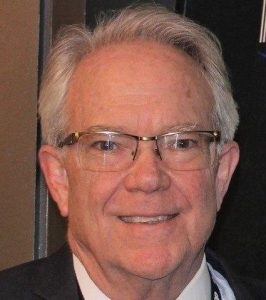While the first two days of the National Association of State Chief Information Officers (NASCIO) Midyear Conference were all about learning from the pandemic experience, the final day’s discussions on May 27 focused on the future.
It’s beyond debate that government IT leaders work in an environment laden with disruption and change, and the last 14 months certainly have made that abundantly clear and then some.
Among the questions laid on the table at the conference’s closing day: How will this pandemic period, and our recovery from it, shape how we live and work in the coming years? What role does information technology play, how can states prepare now to anticipate future needs, and what do societal changes mean for trust in state government?
Panel moderator Amanda Crawford, Executive Director of the Texas Department of Information Resources, tackled some of those with her panel that featured: Bill Eggers, Executive Director, Center for Government Insights, Deloitte; Steve Nichols, Georgia Chief Technology Officer; and Lee Rainie, Director, Internet, and Technology Research at the Pew Research Center.
The Future of Remote Work
Continuing the theme of adapting, Crawford said, “If the last 14 months have taught us anything, it’s been, for all of us here, it’s how to pivot. As technology leaders, I think we are uniquely positioned to be able to pivot quickly since our discipline really evolves around change.”
She used the conference polling function to gauge attendees’ thoughts on several issues. On the question of how difficult the transition to remote work was for their states, 70% of CIOs felt it was easy or somewhat easy. On the CIO’s estimation of the most immediate challenges ahead, adapting to the new remote or hybrid workforce and security issues topped the list with both around 40%, followed by renewing or maintaining trust in government. That last point is particularly interesting, as we will see.
Crawford cited that among the many challenges that CIOs faced during the pandemic, managing a remote workforce was paramount. “With states now transitioning to what looks like a hybrid remote and in-office team,” she asked, “what does that look like for the future of our government IT workforce?”
Georgia CTO Nichols answered first, “I think the one thing we’re all kind of dreading is exactly some kind of a hybrid scenario.” He noted that with the awful highway traffic around Atlanta, not having to fight it every day has been a blessing. “I think we’re looking for a lot more remote work going forward,” Nichols said, although he was apprehensive about the consequences. “I’m not really concerned from a technology perspective, but from the logistical perspective, and the management perspective of how we’re able to keep cohesive teams.”
Deloitte’s Eggers concurred, “We see a number of states headed in different directions. In Tennessee, Tennessee Medicaid has made the decision to have over 70% of their workforce move to a telework posture and then being able to completely eliminate one of their office buildings. Massachusetts is another example where they’re moving towards what they call a virtual first kind of post-COVID scenario.”
New Tech Adoption
Crawford moved the discussion to how the pandemic drove the adoption or acceleration of new technologies as well as constituent expectations for increased digital delivery. Georgia CTO Nichols offered, “What we learned here in Georgia are three categories of technology that really, really happened for us. First of all chatbots, this was a big story for most of the states. In our case, we went from having just a few small agency level implementations to having answered, by the end of 2020, two and a half million questions from Georgia citizens.”
He said the second tech acceleration involved “low code, no code” solutions. Vendor partners brought some of those solutions for things like COVID tracking, test scheduling, and vaccine scheduling.
The third area was the scalability of cloud solutions, with Nichols saying that Georgia had a mix of applications in the on-premise data center and in the cloud. “We were able to scale up our public health website which was hosted in the Amazon cloud to deal with what was a 15,000 percent increase in traffic in March of 2020,” he said. “That was just a real game-changer for us.”
Question of Trust
Finally, Crawford raised the issue of trust in government, and what the public thinks about its performance, and panelists agreed that overall trust in government is quite low.
Eggers said, “We’ve been going out into the field and surveying 4,000 Americans looking at trust in government at the Federal, state and local level, and not just government as a whole but actually individual government agencies.” He explained that there are four “trust signals” that make a huge difference in terms of how people think about trust in the institution. They are humanity, transparency, reliability, and capability – and government must address all of them to satisfy this trust element.
These studies showed that state government is much more trusted right now than the Federal government, and local governments are the most trusted institutions of all. However, when individual government functions are ranked, the poorest at the state level were the usual suspects. These included a perennial favorite – the dreaded department of motor vehicles. However, public sentiment about many state unemployment services and vaccine registration systems also became COVID-driven casualties.
Panelists’ overall sentiment about renewing or improving trust in state government was guarded but did inspire sanguine thoughts for the future. The once-in-100-year probability COVID pandemic could have brought the government totally to its knees, but through the efforts of members of the audience of state IT leaders from around the country, government operations continued.
It was a performance that – with some exceptions – marked state CIOs’ finest hour.

